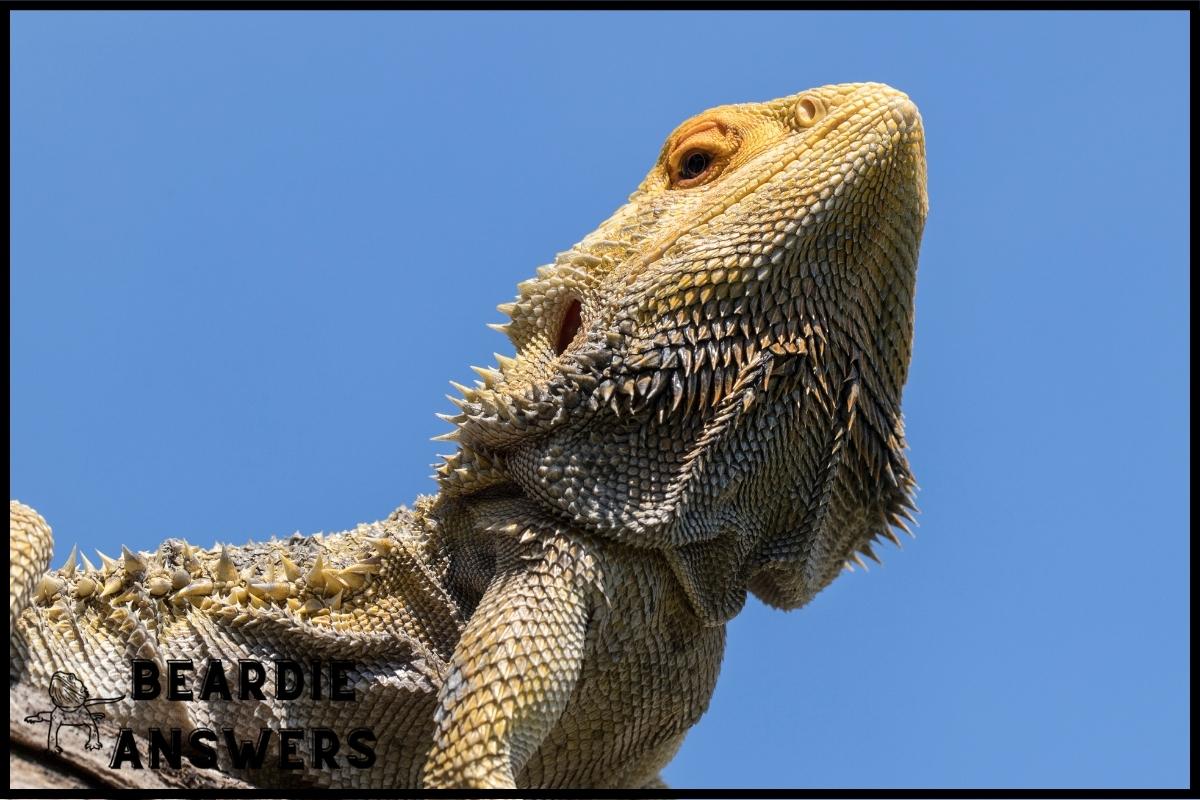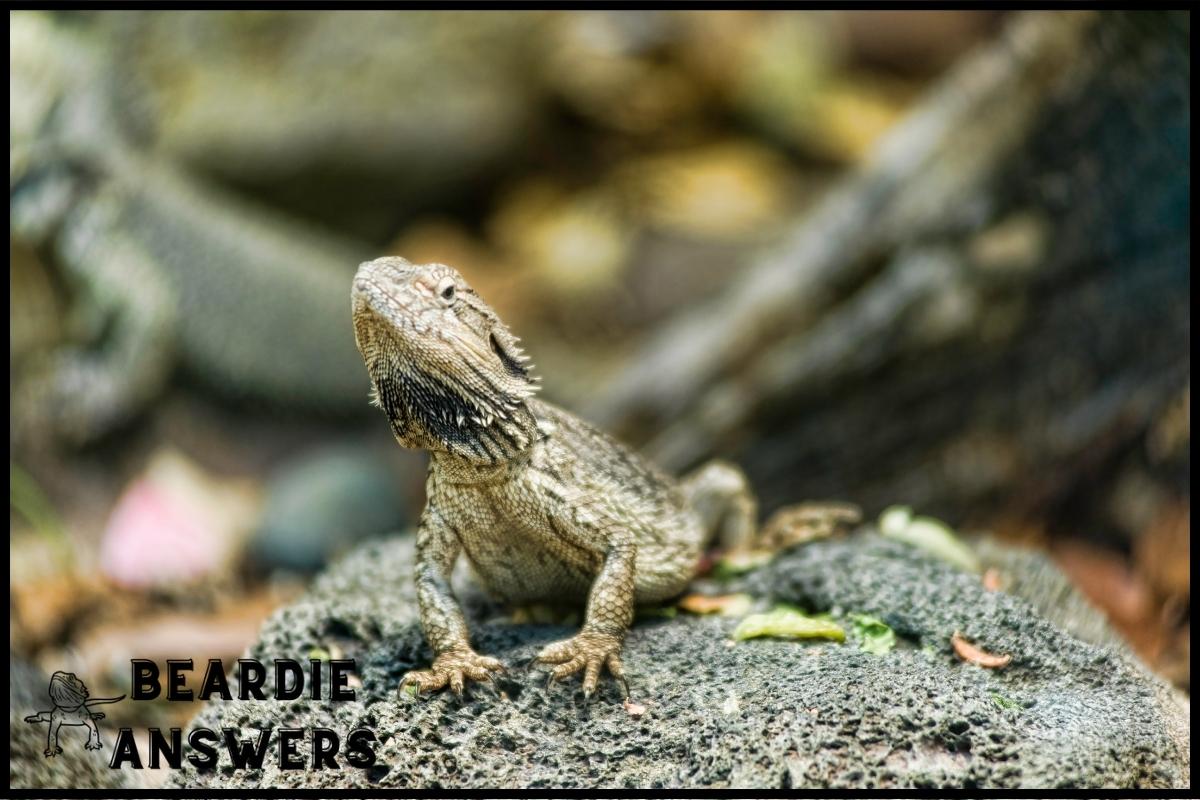[su_note note_color=”#eee”]
A proper aquarium setup for bearded dragons should provide ample space for them to move around, with proper lighting and heating to create a suitable environment. A substrate such as reptile carpet or tile is recommended to prevent any accidental ingestion of loose substrates.[/su_note]
Keeping a bearded dragon as a pet can be an incredibly rewarding experience. Providing them with the right habitat is essential to their health and wellbeing, so it’s important to understand what constitutes a suitable enclosure for these lovable reptiles.
In this article, we’ll discuss how to create the ideal aquarium set up for your beloved beardie in just four easy steps. Bearded dragons require more than just food and water – they need proper lighting, heating, and substrate in order to maintain their optimal physical condition.
We’ll explain exactly what you need to do to ensure that your pet has all of its needs met while living in its own comfortable home. So if you’re looking for guidance on creating the perfect environment for your little scaly friend, read on!
What You'll Learn
Size Considerations
When considering the size of a bearded dragon aquarium setup, ventilation needs and temperature control must also be taken into account.
A 40-gallon tank should provide enough space for adequate air circulation as well as maintain temperatures that are appropriate to promote good health in your pet.
Humidity levels must also be monitored closely, so it is important to select an enclosure material that will help retain humidity while still providing proper ventilation.
The diet options available for bearded dragons can vary based on the size chosen, so make sure you research what type of food works best for your new companion.
In addition to these considerations, there are other elements required for creating the perfect habitat for a bearded dragon.
Adequate lighting is essential for promoting healthy growth and behavior in these reptiles.
Adequate Lighting
Adequate lighting is an essential part of a successful bearded dragon aquarium setup. Providing your pet with the right amount and type of light can be tricky, but it’s important to get it right.
The first step in creating the perfect habitat for your reptilian friend is to ensure that UVB sources are available so they can produce Vitamin D3 – this helps regulate temperature, humidity levels, ventilation needs and hydration levels, all of which are necessary for a healthy beardie!
Here’s a list of recommended supplies:
- Reptile-safe UVB bulbs
- Reflector hoods or dome fixtures
- A digital thermometer/hygrometer combo
- Timers to control lighting cycles
It’s also good practice to install shields between the lamp and your bearded dragon tank to prevent any burns or injuries – you want them to have plenty of room to bask under their heat source without getting too close!
Lastly, make sure there are no drafts near the enclosure as this could affect temperatures negatively.
Heating Requirements
It is important to provide your bearded dragon with the right temperatures in their enclosure.
Heat sources should be provided on one side of the tank, such as a basking rock or lamp, and an appropriate temperature range must be maintained between 85-90 degrees Fahrenheit during the day and 75-80 degrees at night.
A thermostat can help you regulate these temperatures easily so they remain consistent throughout the day.
Proper UV exposure is also necessary for optimal health and it’s recommended to use special reptile bulbs that emit both UVA and UVB light.
To keep humidity levels in check, you can mist the enclosure once per day but avoid soaking it since too much moisture could make your pet sick.
Substrate selection is essential for providing insulation, comfort, and enrichment for your bearded dragon.
Substrate Selection
Coincidentally, the substrate you choose for your bearded dragon’s aquarium setup is just as important as its size and lighting. It should be reptile friendly with enough moisture retention to keep humidity levels optimal.
Many owners opt for bioactive systems which include natural materials like sand or soil that layers of live plants thrive in, while also providing additional calcium supplements through munching on vegetables. Decorative elements can also be added – such as river rocks or wood chips – but they must not contain chemicals that could harm your pet.
Apart from this essential component, there are many other elements to consider when setting up a home for your new friend – furniture and accessories being one of the most crucial ones.
Furniture And Accessories
Substrate choice is an essential part of creating a safe and healthy habitat for your bearded dragon. Now that it’s taken care of, let’s move on to the furniture and accessories necessary for their home.
Water bowls, perches, hides, live plants, and food dishes are all items you’ll want to include in their enclosure. Water bowls should be shallow enough for your beardie to soak in comfortably but heavy enough not to tip over easily when they climb into them. Perches give them places where they can rest and bask in the heat from the lights above. Hides provide security and protection from stressors such as too much light or noise. Live plants help create a more naturalistic look while providing additional hiding spots amongst the leaves. Finally, food dishes will keep feeder insects off the substrate so there won’t be accidently ingested with any type of sand-substrate combination.
Now that we’ve got our bearded dragons’ environment set up properly, it’s time to take a closer look at maintenance and cleaning needs…
Maintenance And Cleaning
Maintaining a bearded dragon aquarium setup is no small feat. To keep your pet healthy, happy and thriving, it’s important to stay on top of the cleaning and upkeep for their enclosure.
A few key elements should be kept in mind when tending to this responsibility: water quality, food choice, hiding spots, handling tips and temperature control.
Water quality should be checked regularly; weekly water changes are recommended with fresh dechlorinated water. When it comes to mealtime, providing a variety of nutritious options such as insects or leafy greens will ensure they get all the nutrients they need.
Hiding spots allow dragons to feel safe while exploring their space- provide branches, rocks and other items that match the environment you’ve created! In terms of handling them properly, make sure to wash hands before and after contact- always support the body from underneath so your bearded friend feels secure.
Lastly but not least, monitoring temperatures within the tank helps maintain a balanced atmosphere for your dragon’s comfort – use thermometers and heat lamps accordingly.
Caring for your beloved reptile can seem overwhelming at times – however if these maintenance steps are consistently followed caring for them becomes second nature!
Conclusion
It’s important to remember that when setting up an aquarium for a bearded dragon, the size and quality of the enclosure is incredibly important. At minimum, the tank should be 40 gallons with proper lighting, heating, and substrate.
From there, owners can add furniture and accessories to make their pet feel at home.
For example, let’s consider Tom who just got his first bearded dragon. He purchased a 55-gallon tank with a canopy lid and UVB lighting designed specifically for reptiles. He chose calcium sand as the substrate, added some rocks and logs for decoration, and set up a basking lamp on one side of the cage so that his new pet would have a place to warm up during the day.
With all these pieces in place – along with regular cleaning and maintenance – Tom knows he has everything necessary for his bearded dragon to thrive in its new home!
Ultimately, it’s essential for any reptile owner to do their research before creating an aquarium habitat for their pet. That way they can ensure that their scaly friend will stay safe and healthy while living out its years comfortably inside its own personal environment.

Hi! My name is Bryan, I am the “one behind the words” here are BeardieAnswers.com. I believe that providing quality care and nutrition is the best way to ensure the health of your pet. Every beardie is special and deserves the best care and attention. If you have questions about your bearded dragon, please don’t hesitate to ask! View My Full Author Page




